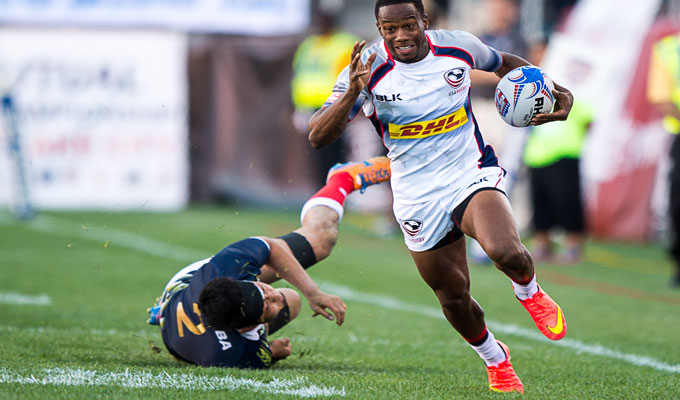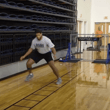The Rugby World Sevens Series is one of the most competitive series of sporting events in the world.The World Rugby Sevens Series is an annual series of international rugby sevens tournaments run by World Rugby featuring national sevens teams.
Rugby World Sevens History
The World Rugby competition was formed to promote an elite-level of international rugby sevens and develop the game into a viable event. HSBC has sponsored the competition since 2014.
The Men's series consists of 10 tournaments that begin in November or December and last until May, while the Women's series comprises 8 tournaments.
Currently, they hold the venues across 10 countries. The United Arab Emirates, South Africa, Australia, New Zealand, the United States, Canada, Hong Kong, Singapore, France and England each host one event.
Teams compete for the World Rugby Series title by accumulating points based on their finishing position in each tournament. The lowest placed core team at the end of the season is dropped and replaced by the winner of the Hong Kong Sevens. New Zealand had originally dominated the Series, but since then, Fiji, South Africa, Samoa and Australia have each won season titles. England and the United States have placed in the top three for several seasons but have not won the series title.
The International Olympic Committee added rugby sevens to the Brazil Summer Olympics beginning in 2016, Tokyo in 2020, and Paris in 2024.
Intensity of Rugby Sevens
Rugby sevens series includes seven players on each side on a normal-sized field. Games are exciting and short, lasting only seven minutes each half. The games are fast-paced and high-scoring with simple rules. It also provides an arena for players to perform "superb feats" of individual skill.
Because of this, Rugby is one of the most exciting sports to watch. There’s never a dull moment. But, it’s also one of the most physically demanding sports, which means injuries are much higher than in other sports.
What’s more, injury incidence increases the more competitive the events. For example, the Rugby World Seven Series will see more injuries than standard season play. [1] The competitive, explosive nature drives these injury rates up, which should surprise no one who plays rugby. It’s a demanding sport!
So, if you’re looking to compete at the highest level possible and increase your chances of winning the Rugby World Seven Series, your goal should be to mitigate against injuries and traumas as much as possible.
We’ll give you a few ideas on how to do that using VertiMax equipment.
How To Use VertiMax To Score
1. Protect Your Head
Rugby is a full-on contact sport. While you would expect players to be protected, much like football players, in reality, rugby players only wear cleats and a uniform. Even during the scrum, players rarely wear protective gear of any kind. Thus, it’s imperative that you keep your head and neck safe and strong.
A long-term study (10 years), found that 33% of injuries in men occurred to their heads. [2] This includes concussions, lacerations, and other injuries. So, it’s vital that we protect the head and neck.
Most neck training is done in a seated, prone, or supine position. However, it’s definitely possible to train neck mechanics while standing or even moving. And you won’t see many people attaching a VertiMax to their heads, but it’s possible.
We can train frontal and sagittal plane movements (i.e., lateral or front/back movements, respectively) while anchoring the VertiMax to the neck or head. So, not only can we train the neck isometrically, we can do so during foundational rugby movements (e.g., running, backpedaling).
Remember, VertiMax bands deliver constant tension through our patented system. So you can use them safely and effectively for many neck and head training programs. The proprietary VertiMax resistance bands are made to maintain the integrity of the bands during the complete range of motion while they deliver consistent resistance. These are not your ordinary resistance bands. Traditional resistance bands or tubes linearly increase in tension the more you pull them until they max out tension or break.
2. Mitigate Concussions
Concussions are extremely common in the rugby world. However, research shows that a strong neck can reduce the risk of concussion. Researchers found that,
“Overall neck strength remained a significant predictor of concussion. For every one pound increase in neck strength, odds of concussion decreased by 5%.”[3]
So, if you want to improve your longevity on the field and reduce the chance of head injuries and concussions, make sure you train your neck accordingly. There are a million ways you can do that using VertiMax, too.
3. Shoulder Mobility
The shoulder is the most mobile joint in the human body. Your shoulder has vast capabilities, but because it’s so mobile, it’s often exposed to many injury opportunities. That’s why shoulder injuries are number two on the most common rugby injuries list. You’ll find rugby players dislocating their shoulder or fracturing their collar bones often, so it’s essential to strengthen those joints as much as possible.
Shoulder Extension Drill
We know that VertiMax is used for explosive movements, but it’s not limited to that by any means. You can use VertiMax in more rehabilitative/protective settings, as this athlete shows with this shoulder extension drill.
External Shoulder Rotation Eccentrics
The beauty of VertiMax is you get constant tension no matter the range of motion you access. You can also use it to train using the movements just as you would play a game. So, it’s super useful for consistently and smoothly loading all shoulder mobility drills you might do as part of your training program.
Here’s another athlete showcasing external shoulder rotation eccentrics for post-op shoulder rehabilitation on a VertiMax V8 platform.
Are you a physical therapist or rehab expert looking to learn how to use VertiMax to your advantage? Then, read this article and learn more: VertiMax: Physical Therapy & Rehab.
4. The Bee’s Knees & Ankles
Unfortunately, knee and ankle injuries are next on the list for rugby athletes, which shouldn’t come as a surprise, given how explosive and fast-paced the game is. If you want strong, versatile knees and ankles, you better train them through their full range of motion. And you better do it often.
Over the years, we’ve seen athletes and coaches using VertiMax in all sorts of unique ways to train the ankles and knees. Here’s an athlete performing backward walks with a VertiMax attached to their waist. As they walk backward, they’re getting loaded through the quads, which is restorative yet difficult.
Given that most ankle and knee injuries occur laterally or with shear (e.g., a player’s knee caves in when their body goes in the opposite direction), we also want to train these joints to sustain lateral or shear force. Here are two athletes practicing lateral stabilization hops.
5. Jump Training
Of course, you can train the ankles and knees in the sagittal plane with jump mechanics, which we’ve covered a ton on our blogs: Vertical Jump Training and 8 Drills To Increase Vertical Jump.
6. Speed Training For Results
It doesn’t matter if you’re trying to boost your athletic performance or mitigate against injuries, VertiMax will level up your rugby game in a matter of weeks. Don’t believe us? Just ask Carlin Isles, known as the" fastest rugby player in the world." See our Isles using the VertiMax Raptor for speed trainining in this article on Carlin Isles - Fastest Rugby Player In The World.
Speed and Stamina
Check out this rugby player amping up her speed and stamina!
Level Up Your Rugby Game
Are you going to do what it takes to win the Rugby World Seven Series next year with VertiMax in your corner, or are you going to hope luck will take you toward the in-goal area? The choice is yours.
References:
























